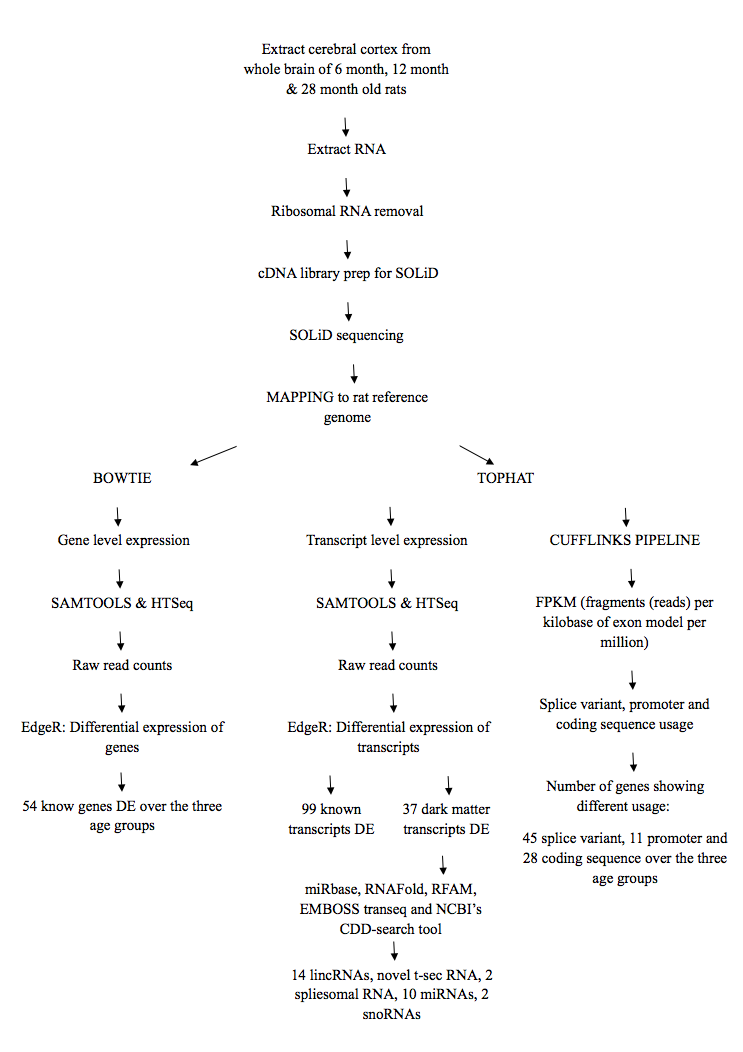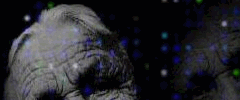Whole Transcriptome Sequencing of the Aging Rat Brain
Brain aging frequently underlies cognitive decline and is a major risk factor for neurodegenerative conditions. The exact molecular mechanisms underlying brain aging, however, remain unknown. Whole transcriptome sequencing provides unparalleled depth and sensitivity in gene expression profiling. It also allows non-coding RNA and splice variant detection/comparison across phenotypes. Using RNA-seq to sequence the cerebral cortex transcriptome in 6-, 12- and 28-month-old rats, age-related changes were studied. Protein-coding genes related to MHC II presentation and serotonin biosynthesis were differentially expressed (DE) in aging. Relative to protein-coding genes, more non-coding genes were DE over the three age-groups. RNA-seq quantifies not only levels of whole genes but also of their individual transcripts. Over the three age-groups, 136 transcripts were DE, 37 of which were so-called dark matter transcripts that do not map to known exons. Fourteen of these transcripts were identified as novel putative long non-coding RNAs. Evidence of isoform switching and changes in usage were found. Promoter and coding sequence usage were also altered, hinting of possible changes to mitochondrial transport within neurons. Therefore, in addition to changes in the expression of protein-coding genes, changes in transcript expression, isoform usage and non-coding RNAs occur with age. This study demonstrates dynamic changes in RNA with age at various genomic levels, which may reflect changes in regulation of transcriptional networks, and provides non-coding RNA gene candidates for further studies.
Raw sequencing data is available in GEO's short read archive (GSE34272).
Shona H. Wood, Thomas Craig, Yang Li, Brian Merry, João Pedro de Magalhães (2013) Whole transcriptome sequencing of the aging rat brain reveals dynamic RNA changes in the dark matter of the genome, AGE 35:763-776
Supplementary data:
Flow diagram of methodology:


